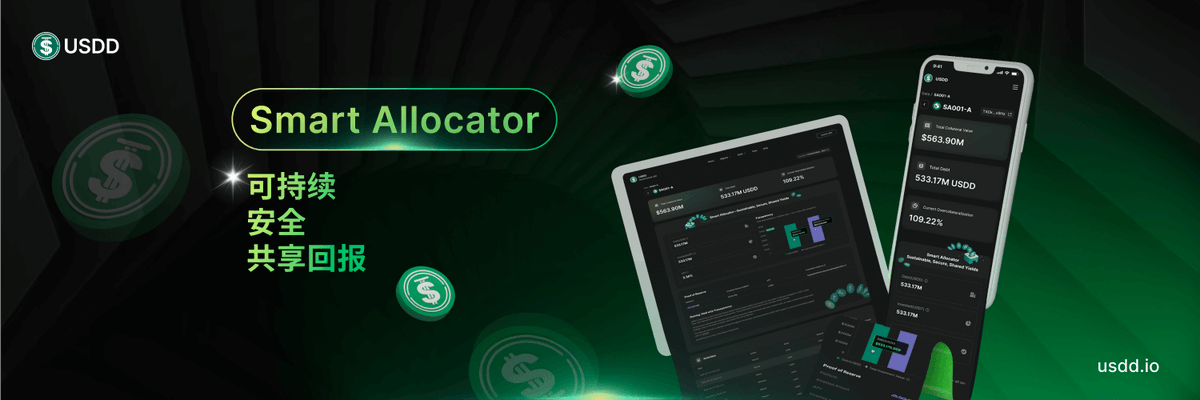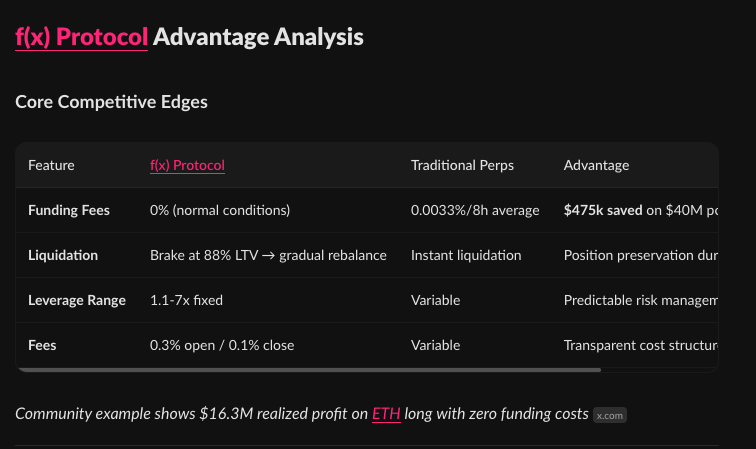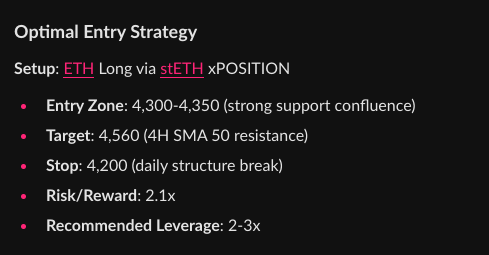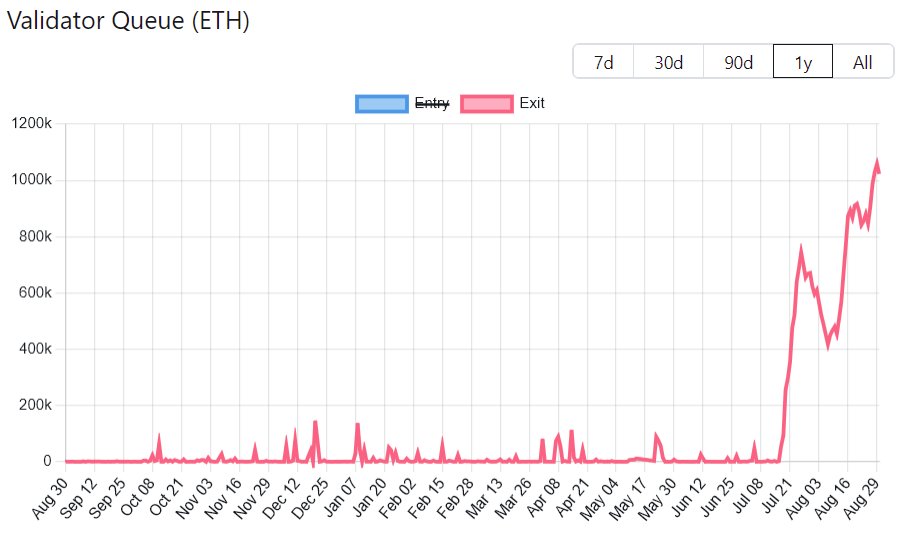Lido Staked Ether-prijs
in EURTop van marktkapitalisatie
€3.817,19
+€72,01 (+1,92%)
EUR
Die kunnen we niet vinden. Controleer of je het goed hebt geschreven of probeer een andere.
Marktkapitalisatie
€33,46 mld. #7
Circulerend aanbod
8,77 mln. / 8,77 mln.
Historisch hoogtepunt
€4.230,73
24u volume
€20,72 mln.
3.6 / 5


Over Lido Staked Ether
STETH, of Lido Staked Ether, is een token dat gestaked Ethereum (ETH) vertegenwoordigt via het Lido-protocol. Wanneer gebruikers hun ETH staken met Lido, ontvangen ze STETH in ruil, dat na verloop van tijd staking-beloningen opbouwt. In tegenstelling tot traditioneel staken blijft STETH liquide, waardoor houders het kunnen verhandelen, uitlenen of gebruiken in gedecentraliseerde financiële (DeFi) applicaties, terwijl ze nog steeds staking-beloningen verdienen. Deze flexibiliteit maakt STETH een populaire keuze voor degenen die willen deelnemen aan Ethereum's proof-of-stake-netwerk zonder hun activa vast te zetten. Door liquiditeit te combineren met staking-beloningen speelt STETH een sleutelrol in het versterken van Ethereum's ecosysteem en het uitbreiden van de bruikbaarheid ervan op DeFi-platforms.
Door AI gegenereerd
Disclaimer
De sociale inhoud op deze pagina ("Inhoud"), inclusief maar niet beperkt tot tweets en statistieken die door LunarCrush worden verstrekt, is afkomstig van derden en wordt alleen voor informatieve doeleinden geleverd "zoals deze is". OKX geeft geen garantie voor de kwaliteit of nauwkeurigheid van de Inhoud en de Inhoud vertegenwoordigt niet de standpunten van OKX. Het is niet bedoeld om (i) beleggingsadvies of een beleggingsaanbeveling te geven; (ii) een aanbod of verzoek om digitale bezitting te kopen, verkopen of te bezitten; of (iii) financieel, boekhoudkundig, juridisch of fiscaal advies. Digitale bezittingen, waaronder stablecoins en NFT's, brengt een hoog risico met zich mee en kan sterk fluctueren. De prijs en prestaties van de digitale bezittingen zijn niet gegarandeerd en kunnen zonder voorafgaande kennisgeving worden gewijzigd.
OKX geeft geen beleggings- of vermogensadvies. Je moet zorgvuldig overwegen of het verhandelen of bezitten van digitale bezittingen voor jou geschikt is in het licht van je financiële toestand. Raadpleeg je juridische, fiscale of beleggingsadviseur als je vragen hebt over je specifieke situatie. Raadpleeg voor meer informatie onze Gebruiksvoorwaarden en Risicowaarschuwing. Door gebruik te maken van de website van derden ('TPW'), ga je ermee akkoord dat elk gebruik van de TPW onderworpen is aan en beheerst wordt door de voorwaarden van de TPW. Tenzij uitdrukkelijk schriftelijk vermeld, zijn OKX en haar partners ("OKX") op geen enkele manier verbonden met de eigenaar van de exploitant van de TPW. Je gaat ermee akkoord dat OKX niet verantwoordelijk of aansprakelijk is voor verlies, schade en andere gevolgen die voortvloeien uit jouw gebruik van de TPW. Houd er rekening mee dat het gebruik van een TPW kan leiden tot verlies of vermindering van je bezittingen. Het product is mogelijk niet in alle rechtsgebieden beschikbaar.
OKX geeft geen beleggings- of vermogensadvies. Je moet zorgvuldig overwegen of het verhandelen of bezitten van digitale bezittingen voor jou geschikt is in het licht van je financiële toestand. Raadpleeg je juridische, fiscale of beleggingsadviseur als je vragen hebt over je specifieke situatie. Raadpleeg voor meer informatie onze Gebruiksvoorwaarden en Risicowaarschuwing. Door gebruik te maken van de website van derden ('TPW'), ga je ermee akkoord dat elk gebruik van de TPW onderworpen is aan en beheerst wordt door de voorwaarden van de TPW. Tenzij uitdrukkelijk schriftelijk vermeld, zijn OKX en haar partners ("OKX") op geen enkele manier verbonden met de eigenaar van de exploitant van de TPW. Je gaat ermee akkoord dat OKX niet verantwoordelijk of aansprakelijk is voor verlies, schade en andere gevolgen die voortvloeien uit jouw gebruik van de TPW. Houd er rekening mee dat het gebruik van een TPW kan leiden tot verlies of vermindering van je bezittingen. Het product is mogelijk niet in alle rechtsgebieden beschikbaar.
Prijsprestaties van Lido Staked Ether
67% beter dan de aandelenmarkt
Afgelopen jaar
+77,22%
€2,15K
3 maanden
+75,49%
€2,18K
30 dagen
+23,45%
€3,09K
7 dagen
-6,79%
€4,09K
Lido Staked Ether op sociale media

Hoe kies je een gedecentraliseerde stablecoin? Vergelijking van USDe, DAI, USDD
Het is algemeen bekend dat zowel presidenten als traditionele industrie-giganten beginnen te investeren in stablecoins, en binnen stablecoins zijn er twee hoofdtypen: gedecentraliseerde stablecoins en gecentraliseerde stablecoins. Onlangs vragen mensen me vaak hoe ze een gedecentraliseerde stablecoin moeten kiezen, dus ik zal de drie meest bekende vergelijken.
1/ Ten eerste de minting-methode
Voor een stablecoin is de minting-methode ook erg belangrijk; een methode die vriendelijk is voor zowel beginners als ervaren DeFi-gebruikers is de meest uitgebreide.
USDe
Mint USDe door ETH of stETH te staken op het Ethena-platform en deel te nemen aan delta-neutrale strategieën. Je moet ETH bezitten.
DAI
Mint DAI door ETH, WBTC en andere crypto-activa te staken in een Maker Vault, terwijl je ook een stabiliteitsvergoeding moet betalen.
USDD
Mint USDD door TRX, sTRX, USDT te staken in een USDD Vault of gebruik USDT voor een 1:1 tweezijdige uitwisseling van USDD via de PSM-module op de officiële website.
2/ Vervolgens is er de onmisbare discussie over het risico van de-pegging
Het grootste zorgpunt voor stablecoins is het risico van de-pegging, zoals eerder het geval was met UST en Luna, die nooit meer terugkwamen. Dus om stabiele winsten te realiseren, moet je letten op de stabiliteitsmethode en of er een risico van de-pegging is.
USDe
USDe handhaaft een 1:1 dollar-pegging via delta-neutrale strategieën, afhankelijk van algoritmes en markt-arbitrage. Maar in extreme marktomstandigheden kan de hedging-strategie falen, wat kan leiden tot een tijdelijke de-pegging. Historische gegevens tonen aan dat USDe ooit een tijdelijke de-pegging heeft ervaren.
DAI
DAI handhaaft een 1:1 dollar-pegging door overgecollateraliseerde crypto-activa, afhankelijk van slimme contracten en arbitrage-mechanismen om vraag en aanbod aan te passen. Als de prijs van de onderpandactiva dramatisch daalt, kan dit liquidatie triggeren, wat leidt tot een vermindering van de DAI-aanvoer en een tijdelijke de-pegging.
USDD
USDD handhaaft stabiliteit door overgecollateraliseerde activa + de PSM-module, waarbij de PSM-module meer dan 90% van de totale waarde vertegenwoordigt. In extreme marktomstandigheden hoef je je geen zorgen te maken, omdat je altijd een 1:1 tweezijdige uitwisseling kunt doen.
3/ Tot slot is er de opbrengst waar we ons zorgen over maken
Zodra de veiligheid is vastgesteld, willen we zeker een stablecoin kiezen met een geschikte opbrengst om te gebruiken of te staken voor winst. Hier nemen we de officiële opbrengsten van de drie stablecoins.
USDe
De officiële opbrengst van het USDe-protocol is relatief onstabiel, met een piek van 28% in het afgelopen jaar en een minimum van ongeveer 3,5%. De recente gegevens liggen rond de 9%.
DAI
DAI heeft een opbrengst van ongeveer 3,24% op AAVE, wat relatief laag is in de recente markt, terwijl andere protocollen iets hogere opbrengsten hebben, maar met een kleinere TVL.
USDD
USDD heeft een opbrengst van ongeveer 6% op JustLend, dat officieel wordt ondersteund, en kan in sommige CEX's 8-10% opbrengst bereiken, wat zeer stabiel is.
Dus welke denk jij dat het beste bij je past?

Handleidingen
Ontdek hoe je Lido Staked Ether kunt kopen
Beginnen met crypto kan overweldigend aanvoelen, maar leren waar en hoe je crypto kunt kopen is eenvoudiger dan je denkt.
Voorspel de prijs van Lido Staked Ether
Hoeveel zal Lido Staked Ether de komende jaren waard zijn? Lees wat de community denkt en doe je voorspellingen.
Bekijk de prijsgeschiedenis van Lido Staked Ether
Volg de prijsgeschiedenis van je Lido Staked Ether om de prestaties van je bezittingen over een langere periode te monitoren. Je kunt de waarden voor openen en sluiten, hoogtepunten, dieptepunten en handelsvolume gemakkelijk bekijken met behulp van de onderstaande tabel.

Koop Lido Staked Ether in 3 stappen
Maak een gratis OKX-account aan.
Stort geld op je account.
Kies je crypto.
Lido Staked Ether Veelgestelde vragen
Momenteel is één Lido Staked Ether de waarde van €3.817,19. Voor antwoorden en inzicht in de prijsactie van Lido Staked Ether ben je op de juiste plek. Ontdek de nieuwste Lido Staked Ether grafieken en handel verantwoord met OKX.
Cryptocurrency's, zoals Lido Staked Ether, zijn digitale bezittingen die op een openbaar grootboek genaamd blockchains werken. Voor meer informatie over munten en tokens die op OKX worden aangeboden en hun verschillende kenmerken, inclusief live-prijzen en grafieken in real time.
Dankzij de financiële crisis van 2008 nam de belangstelling voor gedecentraliseerde financiën toe. Bitcoin bood een nieuwe oplossing door een veilige digitale bezitting te zijn op een gedecentraliseerd netwerk. Sindsdien zijn er ook veel andere tokens zoals Lido Staked Ether aangemaakt.
Bekijk onze Lido Staked Ether Prijsvoorspellingspagina om toekomstige prijzen te voorspellen en je prijsdoelen te bepalen.
Duik dieper in Lido Staked Ether
stETH, een innovatieve utilitytoken die je kunt overschrijven, bestaat uit een deel van de geaggregeerde ETH die binnen het protocol wordt gestaket en bestaat uit zowel gebruikersstortingen als stakingbeloningen. De dagelijkse rebasefunctie van de token zorgt ervoor dat je elke dag de waarde van het aandeel in realtime kunt zien, voor verbeterde communicatie van de positie.
ESG-vermelding
ESG-regelgeving (Environmental, Social, and Governance) voor crypto-bezit is gericht op het aanpakken van hun milieu-impact (bijv. energie-intensieve mining), het bevorderen van transparantie en het waarborgen van ethische bestuurspraktijken om de crypto-industrie op één lijn te brengen met bredere duurzaamheids- en maatschappelijke doelen. Deze regels stimuleren de naleving van normen die risico's beperken en het vertrouwen in digitale bezitting bevorderen.
Marktkapitalisatie
€33,46 mld. #7
Circulerend aanbod
8,77 mln. / 8,77 mln.
Historisch hoogtepunt
€4.230,73
24u volume
€20,72 mln.
3.6 / 5








































